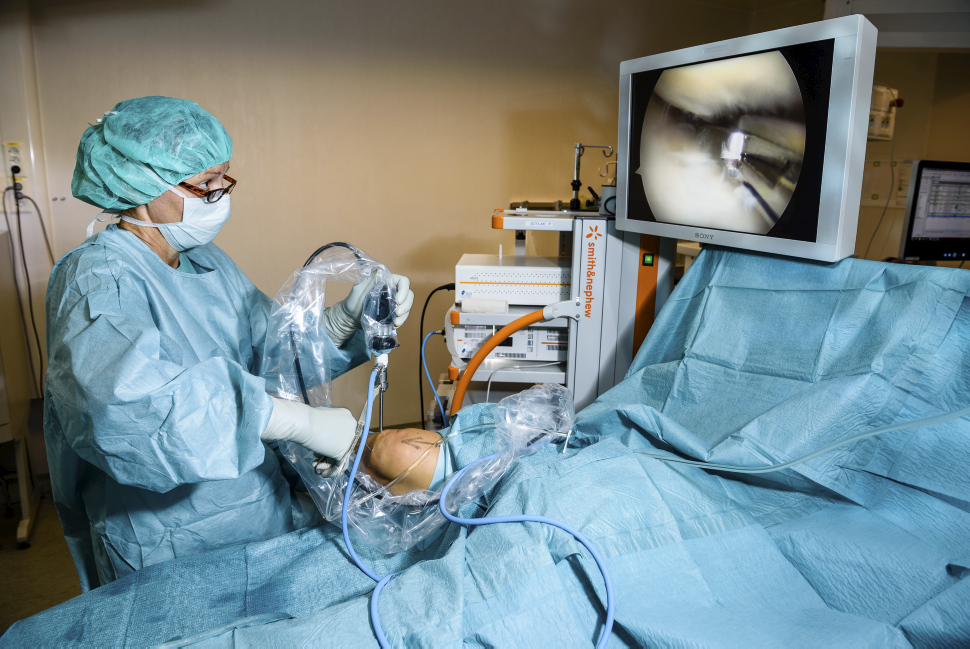A recent study from the University of Oslo finds that three out of four people could avoid knee surgery with a new form of exercise therapy, with significant cost savings for society. Injury to the menisci, the cartilaginous discs within the knee joint, can be painful when running, and can cause the knee to give way or ‘lock’.Such injuries are troublesome and sometimes painful, and can prevent you from exercising or attending work. The new study shows that exercise therapy is just as effective for treating meniscus injuries as surgery.
PhD candidate and orthopaedic surgeon Nina Jullum Kise is in charge of the study. She is a senior consultant at the Department of Orthopaedic Surgery, Martina Hansen’s Hospital in Bærum.
No difference between surgery and exercise
A total of 140 patients with meniscus injuries in Norway and Denmark took part in the study. They drew lots for treatment with either exercise or surgery. Nina Jullum Kise says: Two years later, both groups of patients had fewer symptoms and improved functioning. There was no difference between the two groups. However, those who had exercised had developed greater muscular strength. This is consistent with previous research, which showed that surgery yielded no additional benefits for patients who had had exercise therapy.
The current study is the first to compare cases where the patient had only exercise therapy or only surgery.

Image courtesy of University of Oslo
Big savings
Jullum Kise believes that as many as three in four could be spared surgery with the right exercise therapy program. In 2015 almost 11 000 people in Norway underwent arthroscopic meniscus repair, a form of keyhole surgery. However, the general trend is to place more patients on exercise therapy programmes and hold off on surgery. The study cites the fact that a single meniscus operation is estimated to cost taxpayers in excess of 16 000 Norwegian krone, even before the cost of a worker’s absence is factored in.
Training with physiotherapist
In the study, the patients attended training sessions with a physiotherapist 2–3 times a week for 12 weeks.
– The exercise therapy programme involves a warm up and various types of strength training. It is built up in stages that become more challenging as the patient improves and becomes stronger,” explains Dr Jullum Kise.
Each patient receives a personalized training programme, and learns to do the exercises under the supervision of a physiotherapist. Once they have learned the exercises, they train on their own but attend weekly sessions with the physiotherapist for adjustments and to be given new exercises.
May counteract osteoarthritis
Menisci are crescent-shaped discs of cartilage on both sides of the knee joint. The meniscus is a shock absorber that distributes weight across the joint and at the same time stabilizes the joint when you walk or run. “We hope that the stronger muscles of the exercise therapy group may counteract osteoarthritis, a type of arthritis that often occurs in patients who have undergone surgery for a meniscus injury,” says Dr Jullum Kise.
In principle there are two different types of meniscus injury.
- Acute injuries, which often occur in younger people who might, for example, twist a knee during downhill skiing.
- Wear and tear (degenerative) injuries, which are the first sign that the joint is beginning to break down, so-called osteoarthritis.
Young people with acute injuries should undergo surgery. That way, the meniscus can continue to protect the cartilage in the joint. Damage due to wear and tear cannot be repaired surgically, but the joint can be cleared of worn tissue that would otherwise cause the knee to lock or to give way.
A Danish-Norwegian collaboration
The study is a Danish-Norwegian collaboration and was designed and initiated by:
- Professor Ewa Roos, at the University of Southern Denmark
- Professor May Arna Risberg, at the Norwegian School of Sport Sciences and NAR, Norwegian Research Center for Active Rehabilitation
- Professor Lars Engebretsen, at the University of Oslo and orthopaedic surgeon at Oslo University Hospital
- Dr Silje Stensrud, physiotherapist, who used data from the first three months of the study to complete her PhD thesis.




